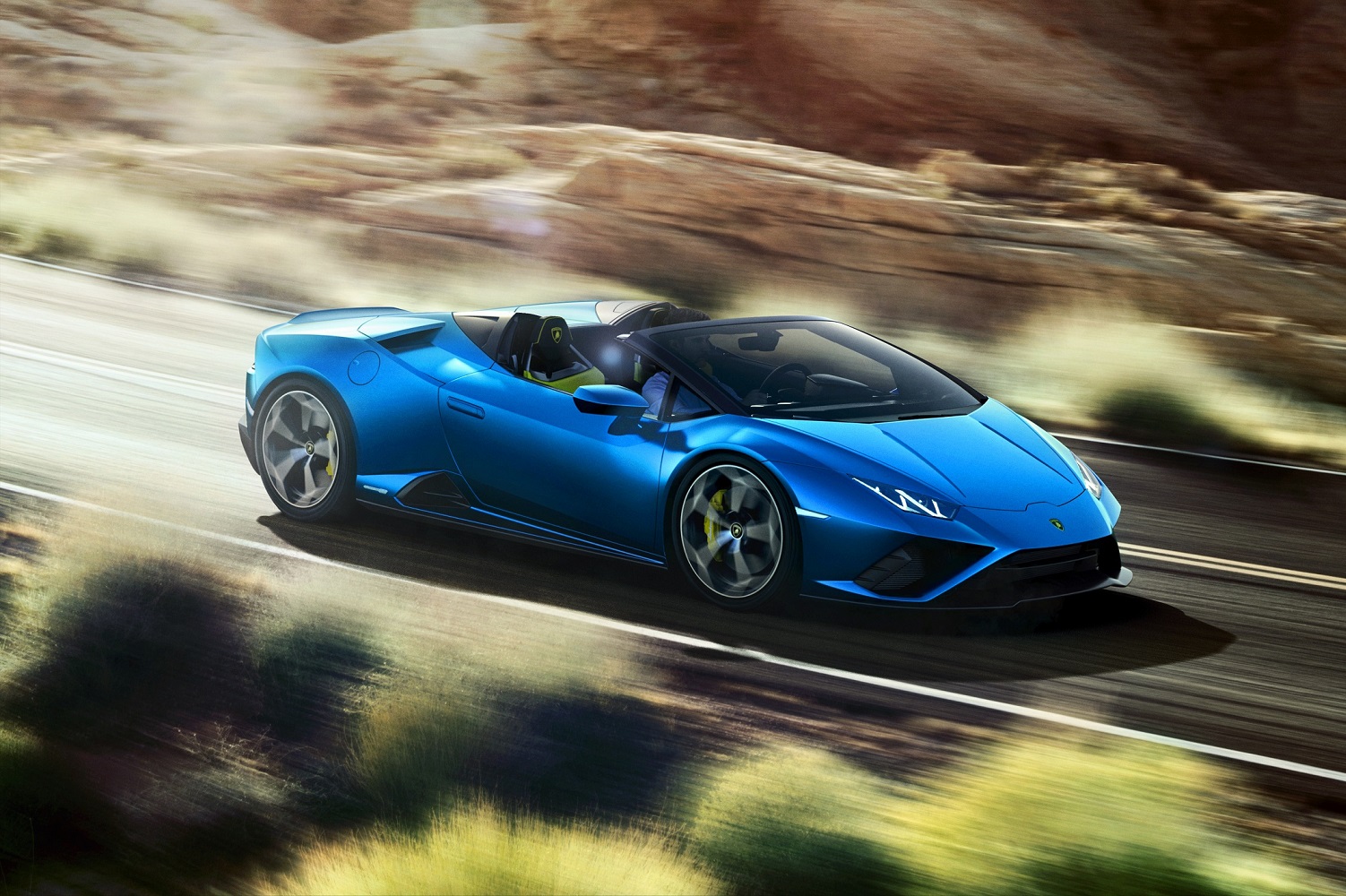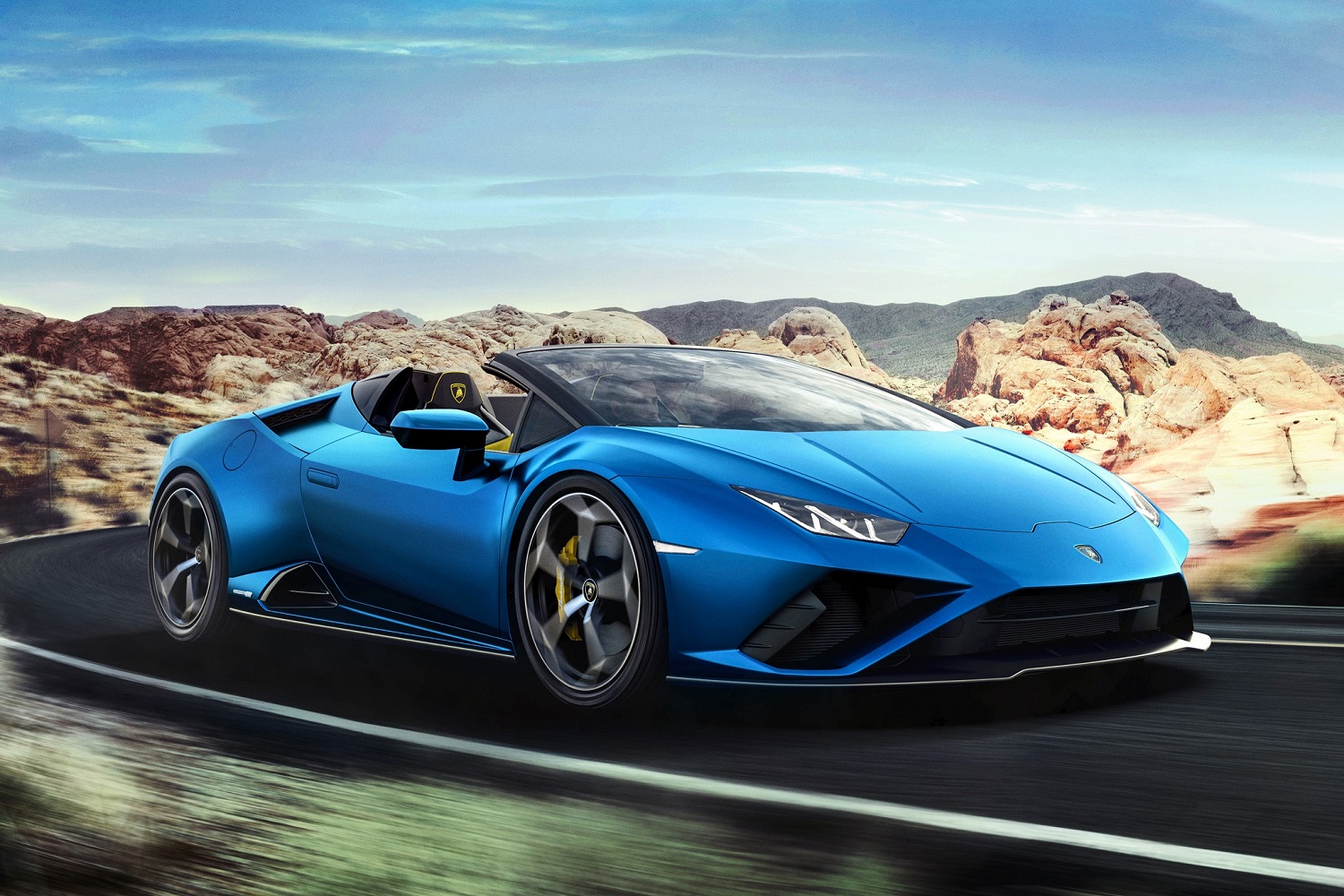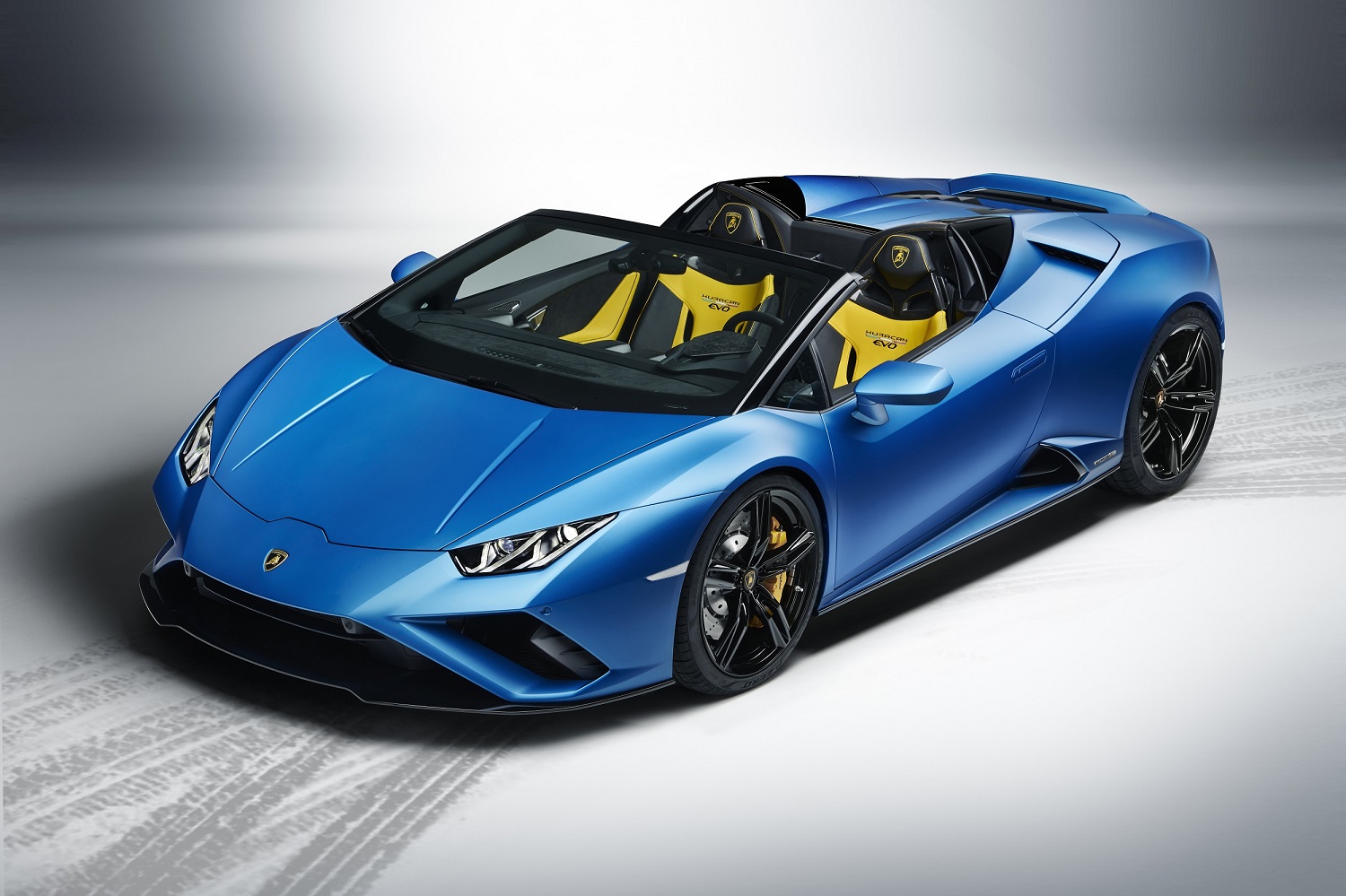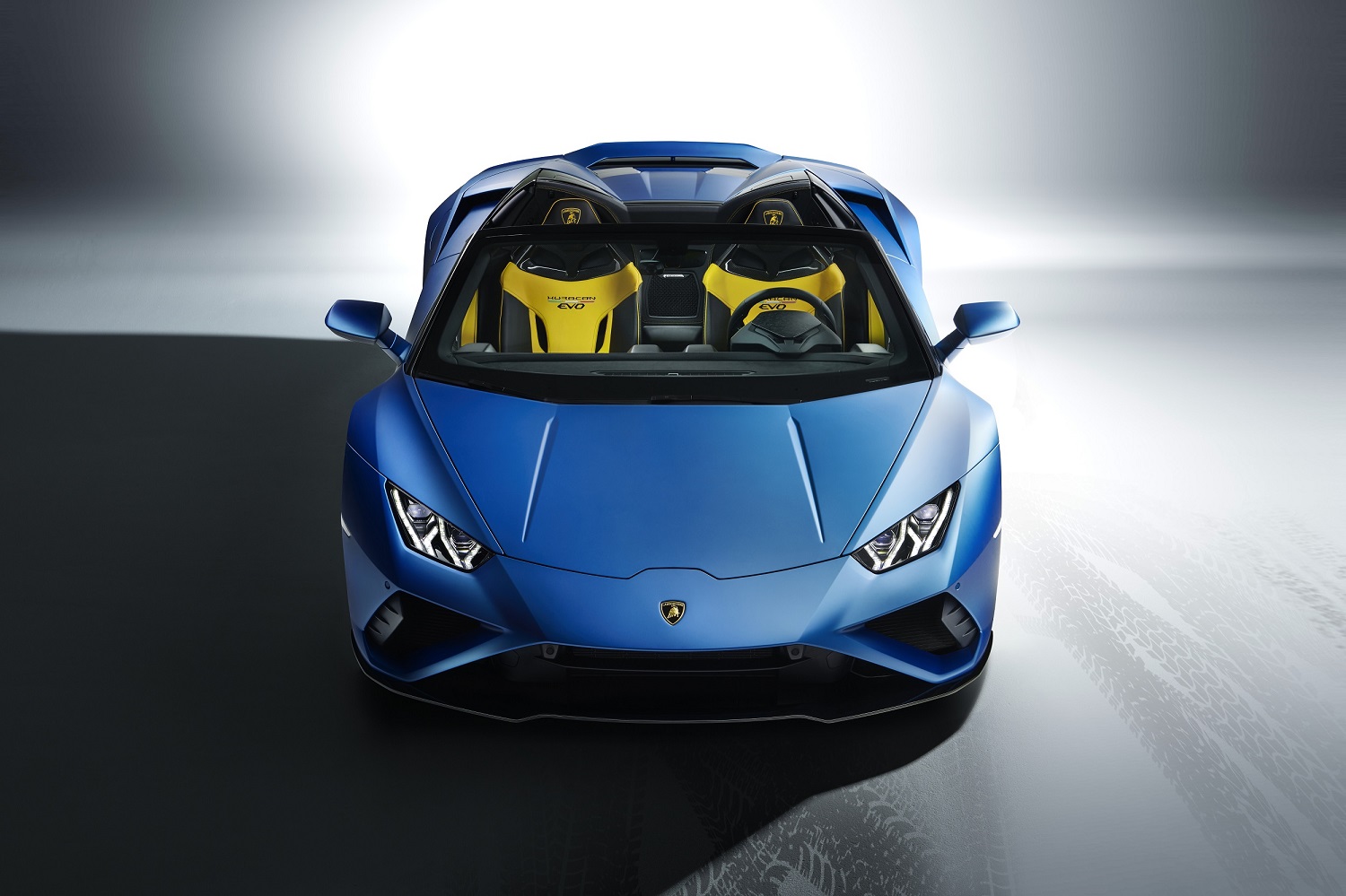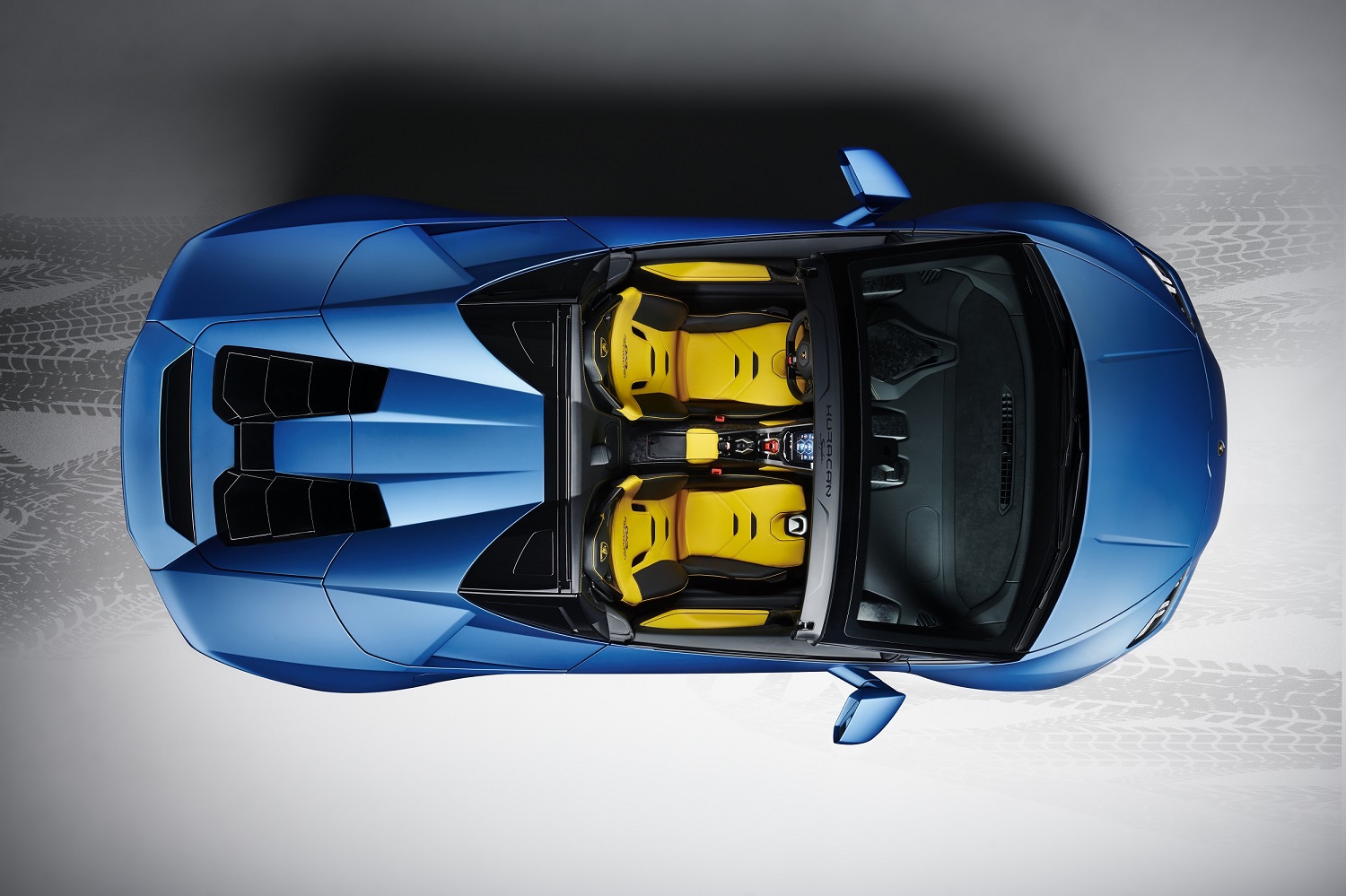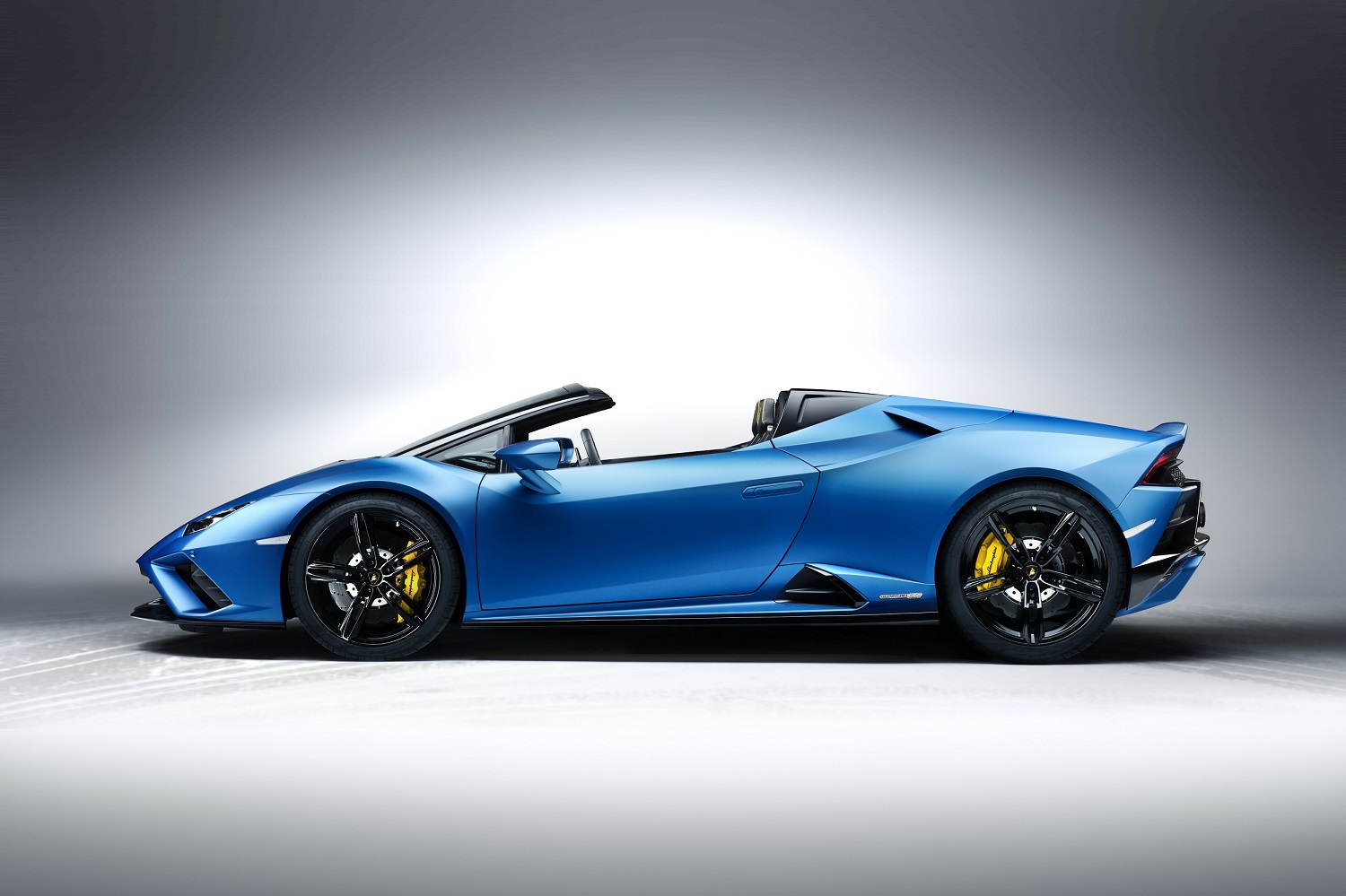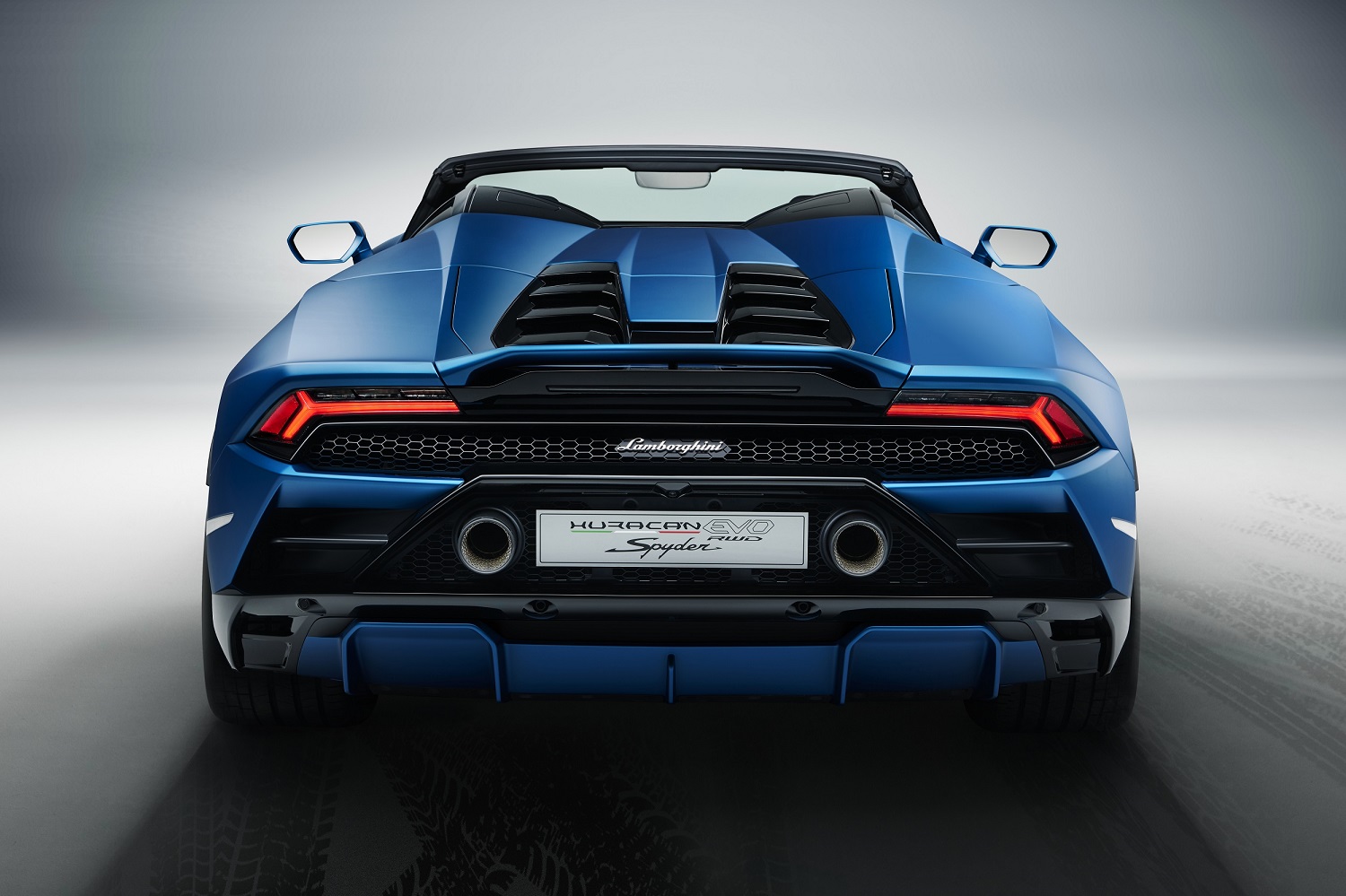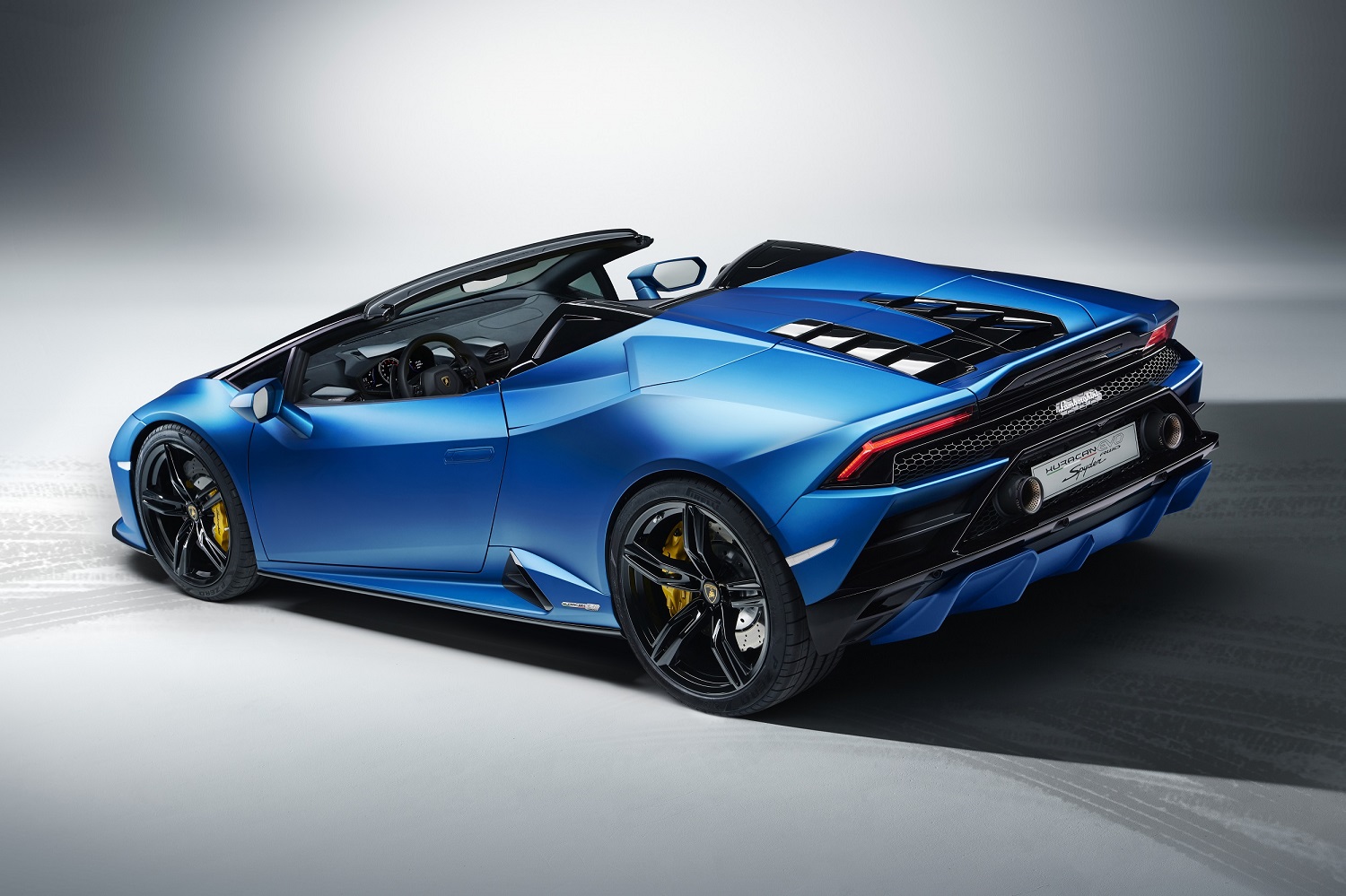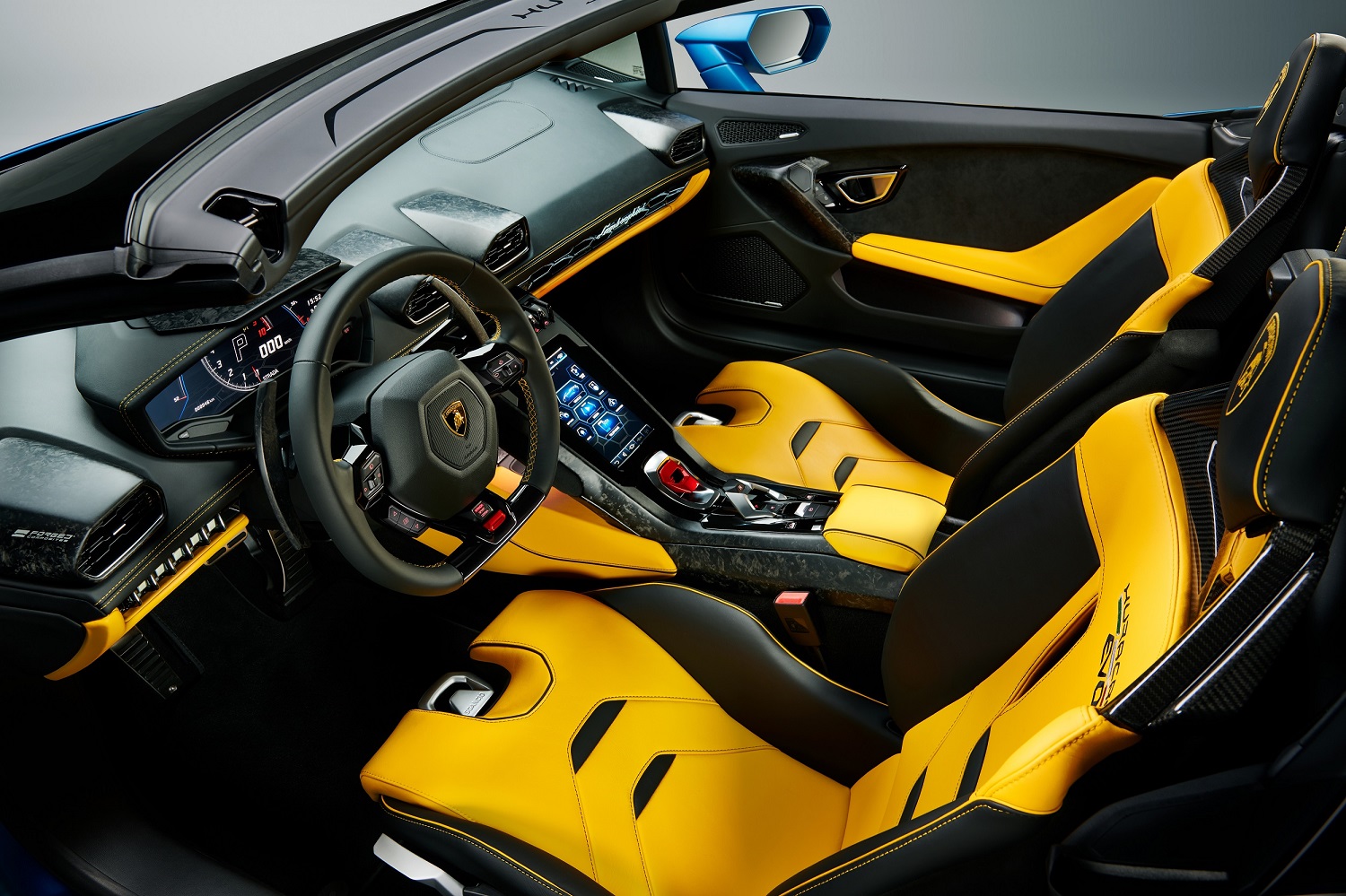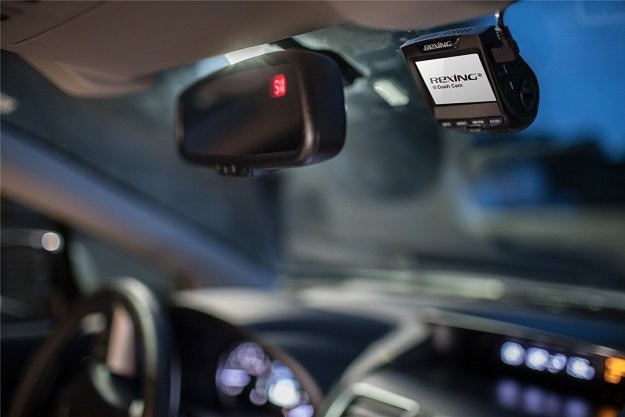Lamborghini has made an argument that connectivity and driving thrills aren’t mutually exclusive by releasing a convertible, rear-wheel drive version of the Huracán Evo Spyder. It’s extremely quick, and it’s one of the most high-tech supercars on the market.
The driver sits directly between a digital, fully configurable instrument cluster and a naturally aspirated (so no turbos), 5.2-liter V10 engine that belts out 610 horsepower and 413 pound-feet of torque. It’s a good place to be. The screen displays information about the car and its surroundings, like its speed and navigation directions.
Look to your right (assuming you’re in a left-hand drive car) and you’ll see a gorgeous touchscreen that displays an infotainment system Lamborghini designed in-house. Maurizio Reggiani, the head of the company’s research and development department, told Digital Trends that his team couldn’t afford to ignore connectivity, so they went all-in. The screen’s resolution is sharp, its graphics are gorgeous and on-brand, and it’s packed with cool features like an available telemetry system that uses video footage captured by two cameras (one right above the windshield, one directly behind the driver) and data sent from the various sensors to paint a digital image of a track run.
Amazon Alexa compatibility is woven right into the software, so it becomes a natural extension of the car. The digital assistant controls the climate control system, turns the heated seats on and off, cranks up the radio (or turns it down), and flicks on the interior lighting, among other functions. That’s assuming she can hear you over the engine, of course.
You’ll have to speak up, especially if the power-operated soft top is neatly folded under the body and the V10 is serenading the occupants. The rear-wheel drive Huracán takes 3.5 seconds to reach 62 mph from a stop, and it goes on to a top speed of 201 mph — by which point Alexa might be talking to you (“slow the hell down!”) and not vice versa. Sending the engine’s power to the rear wheels only also gives the Huracán the ability to drift thanks to gyroscope-based technology that limits the engine’s torque output if it detects the car is about to spin.
Alexa won’t change gears for you. You’ll need to either leave the seven-speed, dual-clutch automatic transmission in drive, or use the steering wheel-mounted shift paddles to go through them yourself.
Lamborghini’s Huracán Evo RWD Spyder will arrive in America in summer 2020. Pricing starts at $229,428 before taxes elbow their way into the equation, a figure that makes it cheaper than the all-wheel drive Spyder.
Editors' Recommendations
- Lamborghini Telemetry X can monitor your driving and your stress level
- 200-mph Lamborghini Huracan Evo gets full Amazon Alexa integration
- You can now apply for a job at McDonald’s via Google Home or Amazon Alexa
- Lamborghini’s Huracán Sterrato concept is pure rally-ready awesomeness

